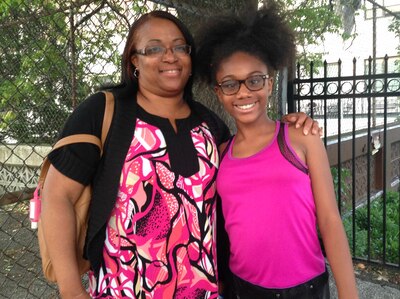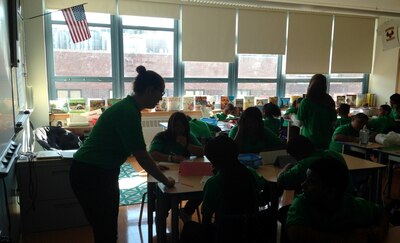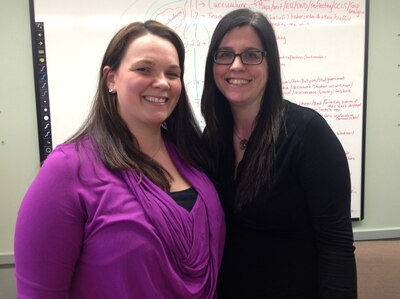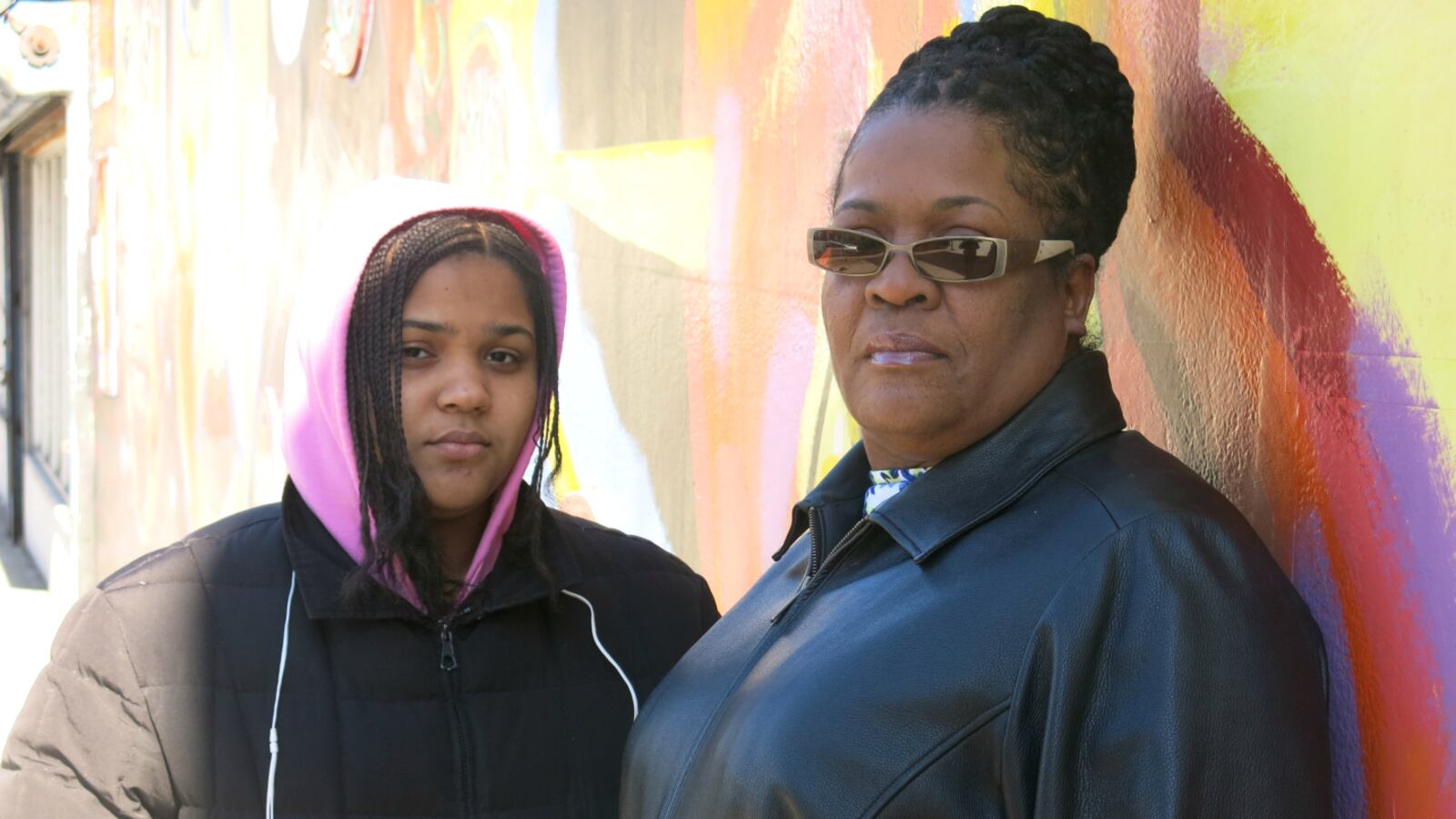After five years in a Bronx grade school, Ashley Gonzalez’s reading problems only seemed to grow worse.
Frustrated, Ashley’s mother Brenda Brazell transferred her in sixth grade to a Harlem charter school. But Ashely, who has dyslexia, could not keep up with the work at her new school, so Brazell sought out advocates who argued in a city hearing that the public school system had not met Ashley’s special needs.
The judge agreed, and as a result Ashley now is in the seventh grade at a private school in Teaneck, New Jersey, for bright students with learning disabilities. The city pays for her daily journey from the Bronx, her lunch, and the school’s tuition, which will cost $39,999 next year.
“If I wasn’t diligent, if I didn’t beg and plead and literally cry for someone to give me assistance,” Brazell said, “I would have never got the help I needed.”
Under city schools Chancellor Carmen Fariña, who has said she aims to get every student reading at grade level by the second grade, the education department is hoping that fewer struggling readers will have to go to such lengths to get the help they need. In an effort launched in December, speech therapists have been asked to assist young students with their basic reading skills, and the department is planning a new partnership with Manhattanville College to train teachers how to help dyslexic students.
Still, advocates have pointed out that funding for the training initiative — $3.2 million over five years — amounts to about $3 per year for each of the city’s more than 186,000 special-needs students, many of whom struggle with reading. In contrast, the city spent more than $222 million last year on private-school tuition in cases like Ashley’s, where judges found that public schools had not met students’ needs, according to a City Council analysis.
Meanwhile, as Ashley’s experience shows, effective interventions for students with serious reading problems are costly: Schools must either hire reading specialists or pay for teachers to take high-priced and lengthy training courses.
“It all boils down,” said Lori Podvesker, a program manager at the advocacy group Resources for Children with Special Needs, “to time and money.”
When reading goes wrong

It is unclear exactly how many city students have serious reading problems. The city does not track the number of students with dyslexia, a learning disorder that involves difficulty reading, since federal education law does not classify that as a separate disability. However, experts estimate that between 5 and 17 percent of school-age children nationwide have dyslexia, and an influential 2004 report said that 70 percent of older students require reading remediation.
When city students experience reading challenges, they often do not get all the help they need — often despite schools’ best efforts. Experts and educators cite many reasons: teachers who lack expertise in reading disorders, crowded classrooms where students may have a range of special needs, and tight school budgets that prohibit intensive interventions.
Ayanna Perry, who has dyslexia and attention deficit hyperactivity disorder, attended Baychester Academy in the Bronx for several years. Ayanna, 11, soon fell far behind in reading: She mixed up letters, had trouble sounding out words, and failed the state English exams.
Her personal education plan called for a full-time special education class, but the public grade school did not offer any, so she was placed in a class alongside students without disabilities but given extra help for parts of the day, according to her mother, Theresa Perry. (The school’s principal, Cristine Vaughan, did not respond to requests for comment, but it is not uncommon for schools to provide special-needs students with different supports than those mandated by their personal learning plans based what is available at the school.)
The school also tried a remedial reading program called the Wilson Reading System, but only offered it twice a week for thirty minutes, Perry said, even though the education department has said the lessons should be given five days a week for at least 45 minutes. Perry eventually paid for private tutoring at a cost of $119 per hour. This year, she enrolled Ayanna in a private school in Queens, whose tuition Perry is hoping the city will cover.
“All those years, they did what they could,” Perry said about the public school system, “but not what was needed.”
How to help struggling readers

The first way to deal with struggling readers is to catch them before they fall, experts say, providing strong early-years reading instruction and assessing students often to spot any learning gaps.
When students start to show signs of significant reading difficulties — they struggle to make sense of individual words and whole texts — then experts say they need frequent, specialized help with their basic reading skills. But that demands highly trained teachers and well-structured programs.
“For kids who need extra help, you can’t just leave it to the teachers to figure out,” said Maggie Moroff, special education policy coordinator at Advocates for Children, the nonprofit that represented Ashley’s mother, Brenda Brazell, in the administrative hearing. Moroff is working on a study of effective literacy interventions in city schools. “If there’s anything consistent I’ve seen in all the programs that work, it’s very, very directed and focused — it’s not haphazard at all.”
One way to run such programs is to hire reading specialists who coordinate the school’s reading interventions and work directly with students. But several observers said fewer schools hire such specialists today than in the past, perhaps because of budget limitations.
“A lot of those positions have been reassigned so that schools don’t have a sufficient number of trained reading specialists,” said Professor Dolores Perin, who coordinates a reading specialist advanced-degree program at Teachers College, Columbia University. She said the program’s graduates often fail to find jobs in city schools because many principals choose instead to have classroom teachers take on that role.
Such teachers are “doing their best,” she said, “but they don’t have the preparation.”
Another approach is to pay for classroom teachers to receive specialized training in programs like Wilson, the approach tried at Ayanna’s former school. Wilson is a multi-year remedial program for students who struggle with basic reading skills.
But such programs require big investments. For instance, a typical Wilson certification course costs $4,000 and includes 90 hours of online learning, 60 in-person sessions, and classroom coaching. Once teachers are trained, the schools must keep their class sizes small: Daily Wilson lessons are meant to include no more than 12 students, and only six if they have learning disabilities.
Meanwhile, schools run the risk of losing their investments. The previous administration trained thousands of teachers in Wilson, but many eventually took their skills to higher-paying districts. And at high-needs schools that often have an outsize number of struggling readers, turnover is a perennial problem.
Lori Wheal, a sixth-grade English teacher at I.S. 131 in the Bronx, said she tries to work with small groups of struggling readers during class while other students read independently. In the past, the school had two Wilson-trained specialists who would have targeted such students.
“Now neither of them are here,” Wheal said. “So we don’t do that anymore.”
A promising literacy initiative for middle schools

As costly and complicated as it can be to catch up struggling readers, schools like J.H.S. 144 in the Bronx show how it is possible when schools get the resources and support they need.
Soon after taking over the floundering school in 2011, then-Principal Jeremy Kabinoff joined the Middle School Quality Initiative, or MSQI. With more than 80 schools today, the city’s four-year-old effort to boost low-performing middle schools by focusing on literacy is likely the largest such program in the country.
At J.H.S. 144, the program quickly took root. Teachers periodically assessed students’ reading levels, ran highly structured reading-strategy and vocabulary courses during 90-minute literacy blocks, and sent the lowest readers to newly trained specialists. To do all that, the school received nearly $500,000 over three years, which funded teacher training and coaching, classroom libraries, computers, and licences for online reading programs.
Katie Ivers, a former math teacher who was licensed to teach English, was trained in Wilson and a similar program, Just Words. Since September, the struggling readers in her intervention classes have already improved an average of 6.33 points on a reading assessment used by MSQI schools. Nationwide, the typical growth for an entire year is 3 to 4 points.
“I believe in it,” Ivers said about the school’s reading approach, “and it works.”
Budding programs target struggling readers
The education department is currently reviewing MSQI to determine its effectiveness and whether it should be expanded, an agency spokesman said.
In addition to that, the city started the initiative in December where speech therapists spend three periods each week collaborating with kindergarten and first-grade teachers to help students with basic reading and speaking skills, according to officials. The effort, which was expanded in February, now includes 148 schools. (The city has not yet released details about the new teacher-training program centered on dyslexia, and Manhattanville College declined to discuss the partnership before it is finalized.)
The city has also hosted more than 100 literacy trainings for educators this year, including workshops on the Wilson program, and principals will be able to request extra help for their reading programs from new borough-based support centers that will open this summer, said spokesman Harry Hartfield. Those various efforts reflect Chancellor Fariña’s commitment to struggling readers, he added.
“By stressing rigorous teaching and vocabulary development,” Hartfield said in a statement, “the chancellor will continue to work tirelessly to ensure that every student is able to read at or above grade level.”
Stay up to date with what’s happening in New York City schools and education policy with our daily newsletter. Sign up here

